new posts in all blogs
Viewing: Blog Posts Tagged with: Reference, Most Recent at Top [Help]
Results 1 - 25 of 333
How to use this Page
You are viewing the most recent posts tagged with the words: Reference in the JacketFlap blog reader. What is a tag? Think of a tag as a keyword or category label. Tags can both help you find posts on JacketFlap.com as well as provide an easy way for you to "remember" and classify posts for later recall. Try adding a tag yourself by clicking "Add a tag" below a post's header. Scroll down through the list of Recent Posts in the left column and click on a post title that sounds interesting. You can view all posts from a specific blog by clicking the Blog name in the right column, or you can click a 'More Posts from this Blog' link in any individual post.

By: Jessica Lanan,
on 10/14/2015
Blog:
Jessica Lanan Illustration
(
Login to Add to MyJacketFlap)
JacketFlap tags:
Lee & Low,
Process and Technique,
The Story I'll Tell,
The Story I'll Paint,
Blog,
Reference,
Drawing,
Research,
Perspective,
Add a tag
Eventually there comes a time when the artist must figure out all the things that are happily ignored during the thumbnail phase: perspective, anatomy, facial expression, and the nitty-gritty details that fill the world of the picture book. This can seem daunting, but there are plenty of steps one can take in order to make this easier.
1. Reference images
I’ve found that it’s well worth my time to make reference photos or sketches for the poses of my characters. Sometimes I had to be pretty creative to get the right angle and pose. For the balloon page, I needed to draw the mother from above, running and dropping firewood at the same time. I put on a dress, bought some firewood, and made my husband photograph me from the second story of our house. It took quite a few tries and a lot of yelling through the window before we got it right. I’m sure the neighbors thought I was crazy.

Yes, I'm wearing jeans under the dress. But it was snowing.
Models are another useful tool. They can be elaborate or simple. Sometimes a bit of modeling clay and a scrap of cloth was enough to get the right position:

Fabric scrap + modeling clay + bowl = hot air balloon baby. Please pardon my dirty window in the background.
2. Perspective
If you’re working with perspective, it’s important to get it right. A few errors can throw the whole illustration off. I often find that my vanishing points are inconveniently distant. There are more traditional ways to deal with this problem, but since I’m a modern gal I’ve taken to using Adobe Illustrator to figure it all out.
The simple and quick method is to open the rough sketch and draw lines for your horizon and vanishing points manually with the line tool. If you have something fancy going on like a wacky three-point perspective or lots of round objects, you can take advantage of the built in perspective tool. I used this for my balloon page, making sure that all the round objects were correctly proportioned:

It looks chaotic, but somehow made sense at the time.
3. Putting it all together
With the perspective lines overlaid on the rough sketch, I projected the whole thing onto a larger piece of paper as my guide for the final drawing, keeping the other reference images nearby. Here you can see the transition from thumbnail to final drawing to final art:

As you can see, the cat transformed into dad at some point along the way.
For more on this subject, I recommend the wonderful reference book by Dinotopia artist James Gurney, Imaginative Realism. If you’re not familiar with Gurney’s work, he is truly a master of his craft. The book worth a read for everyone, but is especially useful for illustrators working in more realistic styles. (No, I’m not cool enough to actually know Gurney personally and he did not ask me to promote his book. It’s just one of my favorite references.)
Coming up next: Adding the Magic – Color and light!
Other posts in the series:
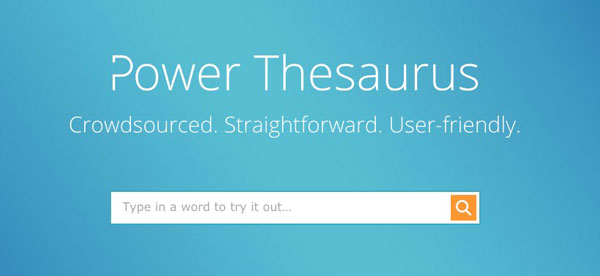
There are already a bunch of online thesaurus sites out there, like Thesaurus.com, Merriam-Webster's Thesaurus, Collins Thesaurus, Visual Thesaurus and others, but Power Thesaurus was the first crowd-sourced online thesaurus I've come across.
I like the clean interface, without all kinds of ads cluttering the space. Just noticed that my friend Tara Lazar also likes it:
 Power Thesaurus creator Alexander Radyushin kindly agreed to answer a few questions for me:
Power Thesaurus creator Alexander Radyushin kindly agreed to answer a few questions for me:
Q. What made you decide to start Power Thesaurus?
Few years ago I was developing a presentation about website development and it became obvious to me that existing thesauri are simply too inconvenient to use as well as their content is not up to date considering the modern pace of language development. So, for me it was obvious that somebody has to combine the power of crowdsourcing with modern web usability standards and create a user-oriented online thesaurus that is been developed for one primary goal - assist user in their pursuit for most relevant terms. In comparison to other similar tools (like thesaurus.com), Power Thesaurus has a greater focus on clean content presentation and ability to narrow down the lists by using parts of speech and/or topic filters.
Q. What has feedback been like so far?
We have a very positive response from writing community. We see a stable growth of regular users as well as very positive reviews of Power Thesaurus by writers in their emails, blogs and social networks. Some of them are listed here: http://www.powerthesaurus.org/_testimonials and in Twitter search https://twitter.com/search?q=powerthesaurus
Q. Any plans for future improvements you'd like to share?
At the moment we are completely rewriting the website and applications (iOS and Android) to a new version of Power Thesaurus that will have a large number of updates in all areas. Few of them are: richer content like phrases, more functionality like term popularity and definitions, upgraded look & feel, including personal customizations, International versions. Some people say that Power Thesaurus is already almost a perfect online thesaurus, however our team still see the potential for a great number of further improvement that will keep us very busy at least in the following years.
Feel free to try out Power Thesaurus yourself: Powerthesaurus.org.
Are you a Power Thesaurus fan? Is there another online writer's thesaurus you'd like to recommend? Feel free to post below.

By:
[email protected],
on 8/12/2015
Blog:
Perpetually Adolescent
(
Login to Add to MyJacketFlap)
JacketFlap tags:
Book News,
humour,
Reference,
Education,
non-fiction,
language,
Dictionary,
Australian,
Lynne Truss,
Eats,
australian author,
Tracey Allen,
Australian writer,
Kate Burridge,
language evolution,
Shoots & Leaves,
Susan Butler,
Add a tag
Being a booklover and an avid reader, I occasionally enjoy reading and learning more about the English language. I’ve read some great books on the topic over the years and thought I’d share some of them with you below. Let’s start with two Australian books for those with a general interest in the origins and future direction of our […]

By: RachelM,
on 5/3/2015
Blog:
OUPblog
(
Login to Add to MyJacketFlap)
JacketFlap tags:
*Featured,
Arts & Humanities,
Andrea Bianchi,
causal,
On Reference,
philosophical reference,
Reference and the election of the new Italian President,
Sergio Mattarella,
Books,
reference,
Politics,
Philosophy,
election,
president,
italy,
Add a tag
After three inconclusive rounds in the preceding days, in which nobody secured the two-thirds majority needed to win, on the morning of 31 January 2015 a fourth round of voting was held in the Italian Parliament to elect the country’s President. This time, a simple majority of the 1,009 eligible voters (the members of both Chambers of the Parliament plus some delegates from the Regions) was enough to decide the election.
The post Reference and the election of the new Italian President appeared first on OUPblog.

By: Mary Norris,
on 4/6/2015
Blog:
PowellsBooks.BLOG
(
Login to Add to MyJacketFlap)
JacketFlap tags:
Reference,
David Crystal,
Linguistics,
Roy Blount,
William Strunk,
Caroline Taggart,
Bryan Garner,
Alexander Humez,
June Casagrande,
Original Essays,
Mark Forsyth,
Chris Baker,
Ferdie Addis,
Jag Bhalla,
James W Pennebaker,
Katherine Barber,
Mary Norris,
Paul Dickson,
Roy Jr Blount,
Add a tag
In the summer of 2012, I got a contract for a book about language, based on my experiences of more than 30 years as a copy editor at The New Yorker. I was thrilled, because now I had license to buy all the books about language that I wanted. That September, I was driving on [...]

By: Kathy Temean,
on 12/28/2014
Blog:
Writing and Illustrating
(
Login to Add to MyJacketFlap)
JacketFlap tags:
Tips,
list,
reference,
inspiration,
Advice,
Process,
authors and illustrators,
demystify,
Kendra Shedenhelm,
Best of Writing and Illustrating 2014,
Add a tag

Kendra Shedenhelm sent this illustration in for us to enjoy. It makes me think of the song that was out a year ago titled, “What does the Fox say.” Must be Tee Hee Hee. The fourth book she has illustrated, “You, the Magician,” was released in November 2014, and can be viewed at http://www.youthemagician.com. http://www.kendrashedenhelm.com/
HERE ARE THE LINKS TO HELPFUL ARTICLES POSTED IN 2014
WORLD BUILDING TIPS
TIPS ON WRITING ENDINGS
THE MANUSCRIPT IN THE DRAWER
SELF PUBLIHING – GETTING YOUR BOOK READY
REVISIONS
TRACKING SUBMISSIONS
PRICING STRATEGIES FOR ILLUSTRATING
MORE SHOWING LESS TELLING
AGENT/AUTHOR REVISION TIPS
RESEARCHING AGENTS
PUTTING WORDS ON PAPER
CREATING SYMPATHIC CHARACTERS
AMAZON RANKING vs. DAILY BOOK SALES
WORKING OUT THE DETAILS
TEN DREADED MANUSCRIPT ERRORS
PITCH IS CONCEPT
STATE OF THE CHILDREN’S PUBLISHING MARKET
STATE OF THE MARKET PART TWO
STATE OF THE MARKET PART THREE
ATTACKING A CONFERENCE
WHEN DO WRITERS STOPW WRITING
MATCHMAKING FOR WRITERS CRITIQUE PARTNERS
SEVEN WAYS TO MAKE YOURSELF AN EASY AUTHORS TO WORK WITH
AMAZON SALES STRATEGIES
AMAZON STATEGIES – LOOK INSIDE
AMAZON STRATEGIES – SALES PAGE
LITERARY vs. COMMERCIAL FICTION
RIGHT TO WRITEPICTURE BOOK CHARACTER DEVELOPMENT
90 THINGS TO KNOW ABOUT YOUR CHARACTER
HOW TO SPOT A GREAT PICTURE BOOK
RESEARCHING FICTION
BEFORE STARTING A THRILLER NOVEL
ROMANTIC BODY LANGUAGE
NEVER SAY HE THOUGHT/SHE THOUGHT
CRITIQUING SECRETS
MASTERING KID SPEAK
LETS TALK POV
RIGHT TO WRITE
GRAMMAR NAZI
FIVE WAYS TO FOLLOW UP WITH AN EDITOR OR AGENTS
OUTLINING YOUR NOVEL
BEFORE THE SALE – BOOK APPEAL
FORMAT YOUR BOOK FOR CREATESPACE
THREE TRICKS FOR SHOWING RATHER THAN TELLING
DEALING WITH REJECTION
CRITIQUING SECRETS
WRITING WORKSHEETS
7 POINT STOR STRUCTURE SYSTEM
Talk tomorrow,
Kathy
Filed under:
Advice,
authors and illustrators,
demystify,
inspiration,
list,
Process,
reference,
Tips Tagged:
Best of Writing and Illustrating 2014,
Kendra Shedenhelm 


By: Kathy Temean,
on 12/17/2014
Blog:
Writing and Illustrating
(
Login to Add to MyJacketFlap)
JacketFlap tags:
Editor & Agent Info,
need to know,
Places to Submit,
Kendra Shedenhelm,
Kimberly Brower,
Rachel Marks,
RF Literary,
Agent,
reference,
authors and illustrators,
opportunity,
Add a tag
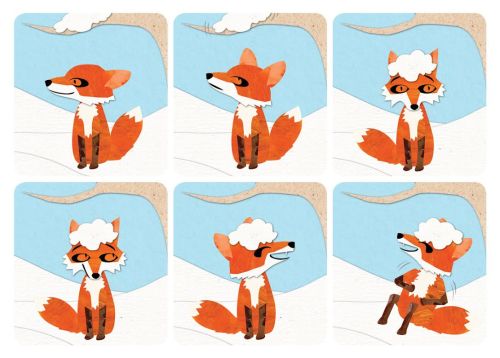
Kendra Shedenhelm sent this illustration in for us to enjoy. It makes me think of the song that was out a year ago titled, “What does the Fox say.” Must be Tee Hee Hee. The fourth book she has illustrated, “You, the Magician,” was released in November 2014, and can be viewed at http://www.youthemagician.com. http://www.kendrashedenhelm.com/

Kimberly Brower, Agent
Kimberly fell in love with reading when she picked up her first Babysitter’s Club book at the age of seven and hasn’t been able to get her nose out of a book since. Reading has always been her passion, even while pursuing her business degree at California State University, Northridge and law degree at Loyola Law School, Los Angeles. By joining the Rebecca Friedman Literary Agency in 2014, she has been able to merge her legal background with her love of books. Although she loves all things romance, she is also searching for books that are different and will surprise her, with empathetic characters and compelling stories.
Kimberly is interested in both commercial and literary fiction, with an emphasis in women’s fiction, contemporary romance, mysteries/thrillers, new adult and young adult, as well as certain areas of non-fiction, including business, diet and fitness.
Follow her on Twitter at @kimberlybrower
 Rachel Marks, Agent
Rachel Marks, Agent
Rachel began her career in the entertainment industry. Starting out as a production assistant, she has worked on popular shows like So You Think You Can Dance, The Biggest Loser, and The Golden Globe Awards Show. In 2011 her focus shifted to publicity and marketing where she worked for Sony Computer Entertainment, assisting in the launches of several video game titles. She is a graduate of University of Miami and lives in Los Angeles.
Rachel is interested in young adult, science fiction, fantasy, new adult and romance.
Follow her on Twitter at
How to submit: Email a query to Kimberly at kimberly [at] rfliterary.com or Rachel [at] rfliterary.com. Submit a brief query letter and your first chapter (pasted into the email, not to exceed fifteen double-spaced pages) and for security purposes, do not include any attachments unless specifically requested.
Talk tomorrow,
Kathy
Filed under:
Agent,
authors and illustrators,
Editor & Agent Info,
need to know,
opportunity,
Places to Submit,
reference Tagged:
Kendra Shedenhelm,
Kimberly Brower,
Rachel Marks,
RF Literary 


By: Kathy Temean,
on 12/9/2014
Blog:
Writing and Illustrating
(
Login to Add to MyJacketFlap)
JacketFlap tags:
reference,
writing,
Advice,
opportunity,
Courses,
How to,
Forms,
Jami Gold,
Yvonne Ventresca,
Downloadable Writing Worksheets,
Add a tag
 Yvonne Ventresca (Pandemic author) sent me a note pointing out all the wonderful writing worksheets on Jami Gold’s Blog. I wanted to make sure I pointed out all the helpful information you can find, download, and use on her site.
Yvonne Ventresca (Pandemic author) sent me a note pointing out all the wonderful writing worksheets on Jami Gold’s Blog. I wanted to make sure I pointed out all the helpful information you can find, download, and use on her site.
Last week we talked about the Seven Point Story Structure System. You can find worksheets for other story structure systems to use on Jami’s site, too.
I particularly like the one below because you can use to see if each scene in your manuscript has what it takes when you revise.
Here is Jami Gold’s Elements of a Good Scene Worksheet from her blog:
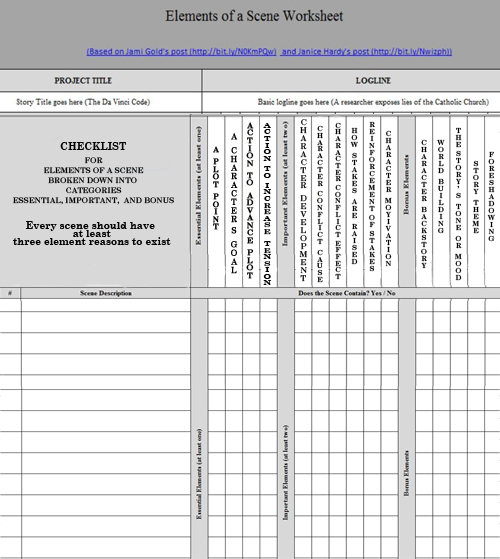
Use this link to download and print the spreadsheet out to use: http://jamigold.com/for-writers/worksheets-for-writers/ – Check it out!
Jami also does workshops:
Full Beat Sheet Basics OnDemand Workshop Information:
Beat sheets, long used by movie scriptwriters, can also help us create strong stories for our novels.
Don’t know what beat sheets are or how to use them?
Do you write by the seat of your pants and don’t want to plan your story in advance?
Never fear—learn the terminology, uses, and ways to adapt beat sheets to our writing methods. At the end of this class, students will have an overview of story structure and beat sheets:
- Introduction to story arcs
- Introduction to beats and terminology
- Digging deeper to avoid formulaic clichés
- Using beat sheets to find unnecessary scenes and pacing issues
- How those who write by the seat of their pants can use beat sheets too
Click here for more information about Jami Gold’s Beat Sheet Basics OnDemand Workshop
A little bit about Jami: After escaping the corporate asylum by leaving a clone in her place, Jami Gold moved to Arizona and decided to become a writer, where she could put her talent for making up stuff to good use. Fortunately, her muse, an arrogant male who delights in causing her to sound as insane as possible, rewards her with unique and rich story ideas. Fueled by chocolate, she writes paranormal romance and urban fantasy tales that range from dark to humorous, but one thing remains the same: Normal need not apply. Just ask her family—and zombie cat.
Thank you Jami for sharing this with all of us.
Talk tomorrow,
Kathy
Filed under:
Advice,
Courses,
How to,
opportunity,
reference,
writing Tagged:
Downloadable Writing Worksheets,
Forms,
Jami Gold,
Yvonne Ventresca 


By: Kathy Temean,
on 11/24/2014
Blog:
Writing and Illustrating
(
Login to Add to MyJacketFlap)
JacketFlap tags:
Benefits of outlining Your Story,
Reason to outline,
Writing Tips,
reference,
inspiration,
Advice,
revisions,
How to,
K.M. Weiland,
Outlining your novel,
Add a tag
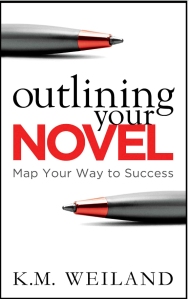 I am a big believer in creating an outline of your story and keep telling other writers how much it will help them with writing their novel. They nod their head, when they really want to pat me on the head and say, “Thanks, but no thanks.” So tonight read the beginning of K.M. Weiland’s “how to write book” titled, OUTLINING YOUR NOVEL, hoping to find someone else who could help persuade others to realize how much it will help them with their manuscripts. After reading the excerpt below, I bought the book and I hope you will check it out. She lays out some good reasons to outline.
I am a big believer in creating an outline of your story and keep telling other writers how much it will help them with writing their novel. They nod their head, when they really want to pat me on the head and say, “Thanks, but no thanks.” So tonight read the beginning of K.M. Weiland’s “how to write book” titled, OUTLINING YOUR NOVEL, hoping to find someone else who could help persuade others to realize how much it will help them with their manuscripts. After reading the excerpt below, I bought the book and I hope you will check it out. She lays out some good reasons to outline.
Here it is:
Benefits of Outlining Your Story
- Ensures Balance and Cohesion
In an outline, you can see at a glance if the inciting even take place too late in the sotry, if the middle sags, or if the climax doesn’t resonate. Instead of having to diagnose and remedy these problems after the first draft, you can fix problems in the outline in only a few keystrokes.
- Prevents Dead-End Ideas
How many times have you started writing an exciting new plot twist, only to realize – 5,000 words later – that it’s led you to a cul-de-sac? You either have to spend valuable time bactracking and trying to write your way around the roadblock – or you have to cut the subplot altogether and start afresh. Outlines allow you to follow plot twists and subplots to their logical end (or lack thereof) in much less time. You can identify the dead-end ideas and cull them before they become annoying and embarrassing ploy holes.
- Provides Foreshadowing
It’s nearly impossible for an author to foreshadow and event of which he has no idea. As a pantser, when a startling plot twist occurs late in the book, you’ll have to go back and sow your foreshadowing into earlier scenes. Not only is this extra work, it can often be difficult to make the new hints of what’s yet to come flow effortlessly with your already constructed scenes. Because an outline give you inside knowledge about what’s going to happen in subsequent scenes, it provides you the opportunity to plant some organic foreshadowing.
- Smoothes Pacing
Like foreshadowing, pacing often requires inside knowledge. If the author doesn’t know the protagonist is about to be shot in the back, he can hardly adjust the pacing to introduce this shocking new event in the right manner. An outline shows you the places where your story is running too fast and the places where it is lagging and sagging.
- Indicates Preferable POVs
When working with multiple points of view it can often be challenging to know which scene should be written from which POV. Too often, we write a scene from one character’s POV, only to realize a different character’s narrative perspective would probably have offered a better experience for the reader. As a result, we’re forced to go back and rewrite the entire scene. Outlines allow us to make educated decisions about POV, thanks to insights regarding plot and character. Just as importantly, outlines permit us to look at the balance of you POVs over the course of the entire novel, so we can ensure each character is getting an appropriate amount of time at the mic.
- Maintains Consistent Character Voice
When writing without an outline, we’re often discovering the characters right along with the readers, and because our perception and understanding of our character often evolve over the course of the story, the result can be an uneven presentation of the character’s voice.
- Offers Motivation and Assurance
Writing a novel can be overwhelming. Typing thousands of words is an undertaking in itself – but when those words all have to hang together in a way that is sensible, entertaining, and resonant, that’s enough to make our knees start shaking beneath our desks. Outlines give us the assurance that we can craft a complete story; all we have to do now is fill in the blanks. And because those blanks are ones that fascinate us, outlines also motivate us to keep on writing through the tough spots, so we can get to the good stuff.
Talk tomorrow,
Kathy
Filed under:
Advice,
How to,
inspiration,
reference,
revisions,
Writing Tips Tagged:
Benefits of outlining Your Story,
K.M. Weiland,
Outlining your novel,
Reason to outline 


Roxanne Smolen
Ever think about self-publishing a book using CreateSpace? Maybe you have hesitated because you were nervous about the expertise needed to digitally format the manuscript to look professional. Well, Roxanne Smolen has worked through the process, wrote up the step-by-step process below, and is willing to share it with you.
Here is Roxanne:
I think of myself as an Indie author, although I’m actually a hybrid. I have seven books published by a small publisher. Those books can be found in every book selling venue possible. But honestly, almost all my sales are through Amazon. I started thinking, why sell through a publisher and give them a healthy cut when I can make more money by doing it myself?
So I began self-publishing. I published two middle-grade books that I wrote with my young granddaughters (under the name R.A.P. Smolen), four writer’s advice books that I wrote with seven other authors (under the name of C. S. Writers), a science fiction novel that I wrote about a woman who literally goes to hell (Satan’s Mirror), and the first three novels of my current book series (The Amazing Wolf Boy).
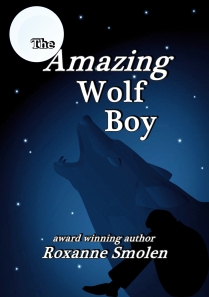 The Amazing Wolf Boy is a humorous paranormal romance for young adults about a sixteen-year-old nerd who turns into a werewolf during Christmas Eve dinner. His parents banish him to Florida (That’s where I live. What a coincidence.) where he fails to fit in with the other kids. You can buy book one here.
The Amazing Wolf Boy is a humorous paranormal romance for young adults about a sixteen-year-old nerd who turns into a werewolf during Christmas Eve dinner. His parents banish him to Florida (That’s where I live. What a coincidence.) where he fails to fit in with the other kids. You can buy book one here.
I’m pretty proud of the book, not only because I wrote it but because I published it. Self-publishing does not carry the stigma it once did. If you are thinking about publishing your own book, my biggest piece of advice is to proofread and edit carefully. It’s so easy to publish a book nowadays authors are putting their work out there with all sorts of errors. You don’t want to be that guy.
The best thing, of course, is to hire an editor. But good editors are expensive, and many of us can’t afford such an investment. If you plan to do it yourself, I have a tip for you—change your font. Just for the editing process. Make it something a little difficult to read, like Broadway or Impact. Something to make you focus. Your brain doesn’t always read what your eyes see; it reads what you thought you wrote. That’s why we can read over a sentence with a misspelled or missing word twenty-five times and not pick it up. If you change your font, your brain will think it’s reading something new and it will pay attention.
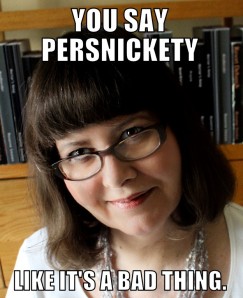 I would also advise you to take care with your book formatting. Readers don’t have the patience to read text with large gaps or ragged indents. On that note, I have written a tutorial.
I would also advise you to take care with your book formatting. Readers don’t have the patience to read text with large gaps or ragged indents. On that note, I have written a tutorial.
How to Format Your Book for CreateSpace
I get a lot of formatting questions, so I thought I’d put it all down in one place. If you find it useful, let me know.
Note: I use Word 2010. Your version of Word might look a bit different, but it should be similar enough for you to figure out.
And now, without further ado, here is how I format a book for CreateSpace.
Ready, Set, Go
- Open your Word .doc
- Set the margins. Go to PAGE LAYOUT –> MARGINS –> CUSTOM MARGINS.
- Under the Margin Tab, make the top 1″, the bottom 1″, the inside .9″, and the outside .6″.
- Orientation should be Portrait.
- Multiple Pages should be changed to Mirror Margins. That’s it for the Margin Tab. Don’t close the box yet.
- Then under the Paper Tab, change the Paper Size to the size of the book you are planning to publish. I like my books to be 8″ by 5″ so I change:
- Width to 5″
- Height to 8″. Then click OK to close the box.
- SELECT ALL (it’s over in the top right-hand corner.) Delete all tabs by using REPLACE (also in the top right-hand corner.)
- Go to the Replace Tab
- Click More
- Click Special
- Click Tab Character
- Leave REPLACE WITH blank
- Click REPLACE ALL
- SELECT ALL
- Click the corner box next to Paragraph.
- Under Indentation, go to SPECIAL
- Select FIRST LINE
- Under BY type .25
- SELECT ALL
- Change line spacing to 1.5
- Click both REMOVE SPACE BEFORE and REMOVE SPACE AFTER so both read ADD.
- SELECT ALL
- Change your font and font size. I usually use Georgia 12pt.
- SELECT ALL
- Justify your margins. Yes! Don’t argue with me.
- SELECT ALL
- Under PAGE LAYOUT, click Hyphenation and Automatic.
- SELECT ALL. Make sure you don’t have any double spaces after punctuation. (This is for all us older authors because we were taught that in high school.)
- Go to the Replace Tab
- Under FIND WHAT, hit the spacebar twice
- Under REPLACE WITH, hit it once
- Click REPLACE ALL
- Make sure the end of every chapter/short story has a new page character.
- Go to PAGE LAYOUT –> BREAKS
- Under Section Breaks, click NEXT PAGE (One caveat to this is if you are publishing a book of short stories. You want each story to start on the right-hand side, right? Or some people want each chapter to start on the right. In that case you would click ODD PAGE.)
- There should be no page numbers, headers, or footers on blank pages.
Front Matter Matters
In order:
- TITLE PAGE
- Use a larger font and make it bold.
- Type your book title about halfway down the page.
- Type your name at the bottom. (This should give you plenty of room to sign at book signings.)
- End the page. (PAGE LAYOUT –> BREAKS –> NEXT PAGE)
- COPYRIGHT PAGE
- Type in your Copyright Notice.
- Example: This is a work of fiction. The characters and events described herein are imaginary and are not intended to refer to specific places or to living persons alive or dead. All rights reserved. No part of this publication may be reproduced, distributed, or transmitted in any form or by any means, including photocopying, recording, or other electronic or mechanical methods without the prior written permission of the publisher except for brief quotations embodied in critical reviews.
- Copyright © (date) by (your name)
- ISBN (Type in the number provided by CreateSpace.)
- You can also add your publishers name, state, website, and logo if you have started your own company.
- End the page. (PAGE LAYOUT –> BREAKS –> NEXT PAGE)
- DEDICATION PAGE
- This is optional. If you are dedicating your book to a loved one or an organization, type it here.
- End the page. (PAGE LAYOUT –> BREAKS –> NEXT PAGE)
- TABLE OF CONTENTS
- You should have a table of contents to list each chapter or short story.
- Go to REFERENCE and click Table of Contents.
- End the page. (PAGE LAYOUT –> BREAKS –> NEXT PAGE)
- NOTES
- If necessary, add a blank page at this point (PAGE LAYOUT –> BREAKS –> NEXT PAGE) so that the first page of your story starts on the right-hand side.
- There should be no page numbers, headers, or footers on the FRONT MATTER (or the back matter either for that matter.)
Back Matter Matters Too
- Add a page for Your Author’s Bio, headshot (I mean a photo, not an actual… although if you’re writing horror and you’re good with make-up…) website, and email address.
- End the page. (PAGE LAYOUT –> BREAKS –> NEXT PAGE)
- Add another page for a list of your previous works and where to buy them.
- End the page. (PAGE LAYOUT –> BREAKS –> NEXT PAGE)
- If you are writing a series, you can put an excerpt of an upcoming book here.
- Remember, there should be no page numbers, headers, or footers on the front or back matter unless you want to use Roman Numerals.
About Your Headers and Footers
- Go to the first page of your story. (Story, not Front Matter.)
- Click INSERT.
- Click HEADER.
- Choose your Header Style. (I usually use Blank.)
- Type the name of your book. (I recommend using a smaller font.)
- Highlight what you just typed and Right align it. (On the Home Tab.)
- Under HEADER & FOOTER TOOLS click ODD & EVEN PAGES.
- Make sure LINK TO PREVIOUS is not selected.
- Now go to the second page of your story.
- Click the Header and type your name.
- Highlight what you typed and Left align it.
- You should now have your Title on the right and your Name on the left on alternating pages.
- Check to be sure the header hasn’t shown up on your Front Matter.
- If it has, delete it and de-select LINK TO PREVIOUS on each page.
- Go back to the first page of your story.
- On the left-hand side of the HEADER & FOOTER TOOLBAR, you will see Page Number. Click it.
- Choose Bottom Of The Page.
- Choose your style. I use Plain Number 2.
- Note: You will have to do this twice—once for the right-hand (odd) side and once for the left-hand (even) side.
- Note: You may have to format the page numbers to get them to run consecutively. To do that, click Page Number again and scroll down to Format Page Number.

Kill the Widows and Orphans
Widow
- A paragraph-ending line that falls at the beginning of the following page/column, thus separated from the rest of the text.
Orphan
- A paragraph-opening line that appears by itself at the bottom of a page/column.
- A word, part of a word, or very short line that appears by itself at the end of a paragraph. Orphans result in too much white space between paragraphs or at the bottom of a page.
Word kills your widows and orphans by default, but the result makes a ragged bottom margin. I’m one of those persnickety people who feel that when you open a book, the bottom margin on both pages should match up. So I kill them manually.
- Click the corner box on PARAGRAPH.
- Click the LINE AND PAGE BREAKS Tab.
- Uncheck Widow/Orphan Control.
- Go through each page of your 500 page book and look for Widows and Orphans, adding or deleting words until the page looks right.
And Another Thing…
The first paragraph of each chapter and after a drop should be flush left, meaning don’t indent. Also, the first letter of the first word of that paragraph should be fancied up. I’m sure you’ve all seen the first letter in a different font with scroll work, etc. The problem is that it messes with the line spacing of the paragraph. The only work-around I know is to insert a picture of the necessary letter in the desired fancy font and then have the text wrap it so there is no problem with the spacing. But that is a lot of work for little gain. I just bold the first letter and leave it in the same font as the rest of the paragraph.
Easy Peasy
When all looks good, you need to save the book as a PDF. Word can do this for you.
FILE –> SAVE AS –> PDF
Now you are ready to upload the .pdf to CreateSpace.
See? It’s as easy as 1, 2, 3… 4, 5, 6… Oh, you get the picture.
Thank you Roxanne for sharing this process with everyone. I know this will help a lot of writers, if not now, later. I am sure they will want to save this for future use. Here is the link to visit Roxanne’s blog: http://www.moonrox.wordpress.com/
Talk soon,
Kathy
Filed under:
Book,
demystify,
How to,
Process,
Publishing Industry,
reference Tagged:
CreateSpace,
Formatting your book 


By: Kathy Temean,
on 11/10/2014
Blog:
Writing and Illustrating
(
Login to Add to MyJacketFlap)
JacketFlap tags:
reference,
Advice,
Process,
article,
How to,
Active Verbs,
Action Tags,
Trish Wilkinson,
Write to Win,
Writing Tips,
Add a tag
Three Tricks For Showing Rather Than Telling
by Trish Wilkinson
 For readers to become invested in a story, they need to “see” characters’ movement and action within a setting. Writers often hear, “Show don’t tell,” and sometimes we think, “But I did show – didn’t I? How do I fix this?”
For readers to become invested in a story, they need to “see” characters’ movement and action within a setting. Writers often hear, “Show don’t tell,” and sometimes we think, “But I did show – didn’t I? How do I fix this?”
Here are a few quick tips for showing rather than telling:
- Use ACTIVE VERBS rather than passive ones wherever possible.
Keep this list of passive verbs near your computer until you get in the habit of using them sparingly. (I tell my students: “If you must use passive verbs, limit them to no more than one or two on a page.”)
- Forms of be to AVOID: is, are, was, were, be, being, and been
- Auxiliary verbs: am, did, do, does, can, may, might, will, would, shall, should, must, has, have, had, could
- Adjectives (describing words)
- Adverbs (words used to modify verbs that tell us when, where, how, in what manner, or to what extent – words ending in –ly; other examples: yesterday, here, barefoot, fastest)
Telling/Passive: She was running quickly to the dilapidated shed because she needed a place to hide.
Showing/Active: She sprinted to the shed, slipped inside, and crouched under a sawhorse behind a stack of paint cans.
- Place your characters in a setting at the beginning of every scene, so your reader can “see” them.
Begin every scene with a few words of setting BEFORE a character shares thoughts or engages in conversation. Otherwise, fuzzy talking heads float in space until the writer gets around to putting the characters in a specific location.
Example:
I heard the T.V., so I went to the living room and found my dad on the couch rubbing his temples.
“You got it wrong,” I said. “Someday these time-wasting doodles will make me rich.”
A quick aside: Forget all the fancy words you learned in middle school – replied, chortled, stuttered, etc. – and use SAID, which is considered the invisible dialogue tag.
- Write ACTION TAGS within conversations rather than dialogue tags wherever possible.
If your characters shove their hands in their pockets or tuck a curl behind an ear or move to the other side of the room, action tags can show details and movement, adding to the depth of the scene.
Example:
I heard the T.V., so I went to the living room and found my dad on the couch, rubbing his temples.
“You got it wrong.” I dropped my drawing in front of him on the coffee table. “Someday these time-wasting doodles will make me rich.”
These three things: active verbs, establishing the setting, and using action tags in dialogue, will transform your scenes from flat and fuzzy into mental motion pictures.
Trish Wilkinson is a writing coach, content and line editor. You can find her at: www.write-to-win.com
Thanks Trish for sharing your expertise with us. I am sure it will help many of the new writers who visit and also help remind the rest of us to always strive for an active voice.
Talk tomorrow,
Kathy
Filed under:
Advice,
article,
How to,
Process,
reference,
Writing Tips Tagged:
Action Tags,
Active Verbs,
Trish Wilkinson,
Write to Win 

I loved books, loved stories, loved being read to at an early age and then reading for myself — that's true for most writers. But looking back, I can see a parallel interest, one I never considered related to all of that reading I did. We lived near my mother's parents, and once or twice [...]

By: Kathy Temean,
on 10/14/2014
Blog:
Writing and Illustrating
(
Login to Add to MyJacketFlap)
JacketFlap tags:
Book,
reference,
writing,
Advice,
revisions,
Point-of-View,
How to,
Jill Elizabeth Nelson,
Basic Tenses in Story Telling,
Rivet Your Readers in Deep Point of View,
Add a tag
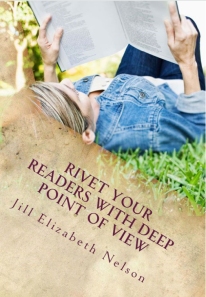 I added Jill Elizabeth Nelson, Rivet Your Readers with Deep Point of View to my writing library and want to recommend that you check it out. The information is good and the price is right – $3.99 on Kindle and $5.39 in paperback. You can take a look at Jill’s romantic suspense novels by clicking this link to her website. http://www.jillelizabethnelson.com/
I added Jill Elizabeth Nelson, Rivet Your Readers with Deep Point of View to my writing library and want to recommend that you check it out. The information is good and the price is right – $3.99 on Kindle and $5.39 in paperback. You can take a look at Jill’s romantic suspense novels by clicking this link to her website. http://www.jillelizabethnelson.com/
Below are just a few things that Jill explains in her book. She gets more in depth during the book.
In fiction writing, the position from which anything is considered in any given scene should be the character through whose head we are viewing events. That character’s psyche – his or her very soul – is the standpoint from which everything else in the scene is presented and evaluated. This particular character is the point-of-view character or POVC.
In order to remain firmly inside the POVC’s head, nothing in a scene can be presented for reader consideration that is outside that character’s awareness.
First Person:
Requires that nothing can be heard, seen, or experienced except through the senses of the character relating the story. However, a first-person narrative does allow for the viewpoint character to skip ahead in the sequence of events, and make a comment like, “If I had known…”, but you should weigh the moment and decide if the segue into telling is worth the loss of immediacy.
You may ask, “Isn’t first person automatically deep POV? No. It is possible to write “Shallow” and “telling” first person.
Second Person:
This viewpoint character is “you”. It is a problematic and difficult POV. Reader want to identify with the characters in a novel; they don’t necessarily want the writer to point the finger at them as the “you” character. Usually is an awkward presentation. Though writer will use this when describing a step-by-step “How to book”.
Third Person, Single POV:
Reqguires the author to remain inside one character throughout the story (much like first person). This creates an excellent opportunity for reader to identify with the main character. A drawback is the limitation in what can be shown. Events that happen outside the POVC’s experience must either be told to him by another character or discovered by that character in another way.
Third Person, Multiple POV:
Using this method, the writer puts the reader into the heads of more than one character during the course of the story. Romances do a lot of this by telling the story through the POV of the male and females protagonist. A scene with multiple POS’s is hard to pull off, unless you are a season writer. Head hopping can be confusing, so you are better off not ping-ponging around in everyone’s head. You will be better served by staying in one POV throughout the scene and conveying the subtleties of the reaction, attitude, and emotion emanating from other characters by employing body language, voice inflection, and mannerisms. By staying in one person head, they can misread the situation, and the misperception creates additional conflict valuable to the story.
Third Person, Omniscient POV:
The viewpoint character is an omniscient narrator who tells a story about a cast of character from an all-knowing position. The narrator himself becomes an unseen character that can share things that even the characters do not know about themselves, so may have a god-like feel. Sweeping epics like Lord of the Rings employ this POV to good effect. The advantage is that this POV helps manage the length of the story and the sheer number of characters. Book Thief with its narrator being Death comes to mind.
Are there any areas where I violate the basic Point-of-View by inserting comments that the POV character cannot know?
Example: Dan turned away and didn’t notice Harry slip out the door. (Dan would not be able to see Harry’s sneaky retreat.)
Here is a rewrite:
Fists clenching and unclenching, Dan gazed around the kitchen. Where was that Louse? He had to be here somewhere.
“Harry, I need to talk to you. Now!”
Silence answered Dan’s shout.
He strode toward the living room. A gentle whoosh of air behind him stopped him in his tracks. Dan whirled. The screen door was settling back in place. The coward was on the run.
Now the reader knows that Harry slipped out the door, but we haven’t left Dan’s POV in order to convey that information. Plus, by refusing to take the lazy way out and “tell” the information through a POV violation, the story becomes much more immediate and exciting.
Love her examples. I think you will, too.
Talk tomorrow,
Kathy
Filed under:
Advice,
Book,
How to,
reference,
revisions,
writing Tagged:
Basic Tenses in Story Telling,
Jill Elizabeth Nelson,
Point-of-View,
Rivet Your Readers in Deep Point of View 


By: Kathy Temean,
on 10/14/2014
Blog:
Writing and Illustrating
(
Login to Add to MyJacketFlap)
JacketFlap tags:
Book,
reference,
writing,
Advice,
revisions,
Point-of-View,
How to,
Jill Elizabeth Nelson,
Basic Tenses in Story Telling,
Rivet Your Readers in Deep Point of View,
Add a tag
 I added Jill Elizabeth Nelson, Rivet Your Readers with Deep Point of View to my writing library and want to recommend that you check it out. The information is good and the price is right – $3.99 on Kindle and $5.39 in paperback. You can take a look at Jill’s romantic suspense novels by clicking this link to her website. http://www.jillelizabethnelson.com/
I added Jill Elizabeth Nelson, Rivet Your Readers with Deep Point of View to my writing library and want to recommend that you check it out. The information is good and the price is right – $3.99 on Kindle and $5.39 in paperback. You can take a look at Jill’s romantic suspense novels by clicking this link to her website. http://www.jillelizabethnelson.com/
Below are just a few things that Jill explains in her book. She gets more in depth during the book.
In fiction writing, the position from which anything is considered in any given scene should be the character through whose head we are viewing events. That character’s psyche – his or her very soul – is the standpoint from which everything else in the scene is presented and evaluated. This particular character is the point-of-view character or POVC.
In order to remain firmly inside the POVC’s head, nothing in a scene can be presented for reader consideration that is outside that character’s awareness.
First Person:
Requires that nothing can be heard, seen, or experienced except through the senses of the character relating the story. However, a first-person narrative does allow for the viewpoint character to skip ahead in the sequence of events, and make a comment like, “If I had known…”, but you should weigh the moment and decide if the segue into telling is worth the loss of immediacy.
You may ask, “Isn’t first person automatically deep POV? No. It is possible to write “Shallow” and “telling” first person.
Second Person:
This viewpoint character is “you”. It is a problematic and difficult POV. Reader want to identify with the characters in a novel; they don’t necessarily want the writer to point the finger at them as the “you” character. Usually is an awkward presentation. Though writer will use this when describing a step-by-step “How to book”.
Third Person, Single POV:
Reqguires the author to remain inside one character throughout the story (much like first person). This creates an excellent opportunity for reader to identify with the main character. A drawback is the limitation in what can be shown. Events that happen outside the POVC’s experience must either be told to him by another character or discovered by that character in another way.
Third Person, Multiple POV:
Using this method, the writer puts the reader into the heads of more than one character during the course of the story. Romances do a lot of this by telling the story through the POV of the male and females protagonist. A scene with multiple POS’s is hard to pull off, unless you are a season writer. Head hopping can be confusing, so you are better off not ping-ponging around in everyone’s head. You will be better served by staying in one POV throughout the scene and conveying the subtleties of the reaction, attitude, and emotion emanating from other characters by employing body language, voice inflection, and mannerisms. By staying in one person head, they can misread the situation, and the misperception creates additional conflict valuable to the story.
Third Person, Omniscient POV:
The viewpoint character is an omniscient narrator who tells a story about a cast of character from an all-knowing position. The narrator himself becomes an unseen character that can share things that even the characters do not know about themselves, so may have a god-like feel. Sweeping epics like Lord of the Rings employ this POV to good effect. The advantage is that this POV helps manage the length of the story and the sheer number of characters. Book Thief with its narrator being Death comes to mind.
Are there any areas where I violate the basic Point-of-View by inserting comments that the POV character cannot know?
Example: Dan turned away and didn’t notice Harry slip out the door. (Dan would not be able to see Harry’s sneaky retreat.)
Here is a rewrite:
Fists clenching and unclenching, Dan gazed around the kitchen. Where was that Louse? He had to be here somewhere.
“Harry, I need to talk to you. Now!”
Silence answered Dan’s shout.
He strode toward the living room. A gentle whoosh of air behind him stopped him in his tracks. Dan whirled. The screen door was settling back in place. The coward was on the run.
Now the reader knows that Harry slipped out the door, but we haven’t left Dan’s POV in order to convey that information. Plus, by refusing to take the lazy way out and “tell” the information through a POV violation, the story becomes much more immediate and exciting.
Love her examples. I think you will, too.
Talk tomorrow,
Kathy
Filed under:
Advice,
Book,
How to,
reference,
revisions,
writing Tagged:
Basic Tenses in Story Telling,
Jill Elizabeth Nelson,
Point-of-View,
Rivet Your Readers in Deep Point of View 


By: Kathy Temean,
on 10/6/2014
Blog:
Writing and Illustrating
(
Login to Add to MyJacketFlap)
JacketFlap tags:
Writing Tips,
reference,
Advice,
revisions,
article,
Guest Blogger,
Grammar Nazi,
D-Day and Beyond,
Julie Phend,
World War ll,
Add a tag
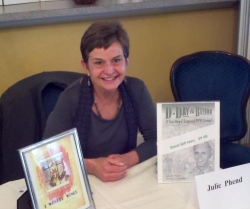 I met Julie Phend at the recent Avalon Writer’s Retreat. She was in my group and I was so impressed because her manuscript was the most polished piece of writing I had ever seen. I found out that Julie is a English teacher and begged her to be a guest blogger and share some common errors that people could easily fix in their own manuscripts.
I met Julie Phend at the recent Avalon Writer’s Retreat. She was in my group and I was so impressed because her manuscript was the most polished piece of writing I had ever seen. I found out that Julie is a English teacher and begged her to be a guest blogger and share some common errors that people could easily fix in their own manuscripts.
Here is what she sent.
Notes from a Grammar Nazi by Julie Phend
Arghh! No writer wants to have her grammar questioned. BUT the truth is that as writers, we are judged as much by our grammar and punctuation as by our witty characters and suspenseful plots. So it makes sense to familiarize ourselves with some rules we’ll use over and over again. Here are a few simple tips to help you avoid common problems.
CAPITALIZATION OF PROPER NOUNS:
Names of Family Members: As writers for children and youth, we will frequently reference moms and dads, grandparents, aunts and uncles. When do you capitalize these words?
Rule: Capitalize family members only when part of a name or used instead of a name. Don’t capitalize when used with a possessive pronoun.
Examples: I wish my mom would listen. I wish Mom would listen.
I bought a gift for Aunt Alice. I bought a gift for my aunt.
Names of School Subjects: Again, as writers for kids, we’ll often reference classes they take.
Rule: School subjects are only capitalized when they are a specific title or when used with a number.
Examples: My math class is boring, but the worst class I ever took was Math 101. Or maybe it was Advanced Algebra.
PUNCTUATING DIALOGUE: Good fiction is filled with snappy dialogue, so let’s be sure the reader (or agent or editor) is not distracted by incorrect punctuation.
Rules: If a quote is interrupted by a dialogue tag, whether you use a period or a comma depends on whether the second part of the quote is a complete sentence. If the second part of the quote is a separate sentence, use a period after the dialogue tag and a capital letter to begin the next sentence.
Example: “I can’t believe I ate the whole thing,” Jenny groaned. “That hamburger weighed a whole pound!”
BUT when a dialogue tag interrupts a sentence, use commas around the tag, and lower case letters when the sentence is completed.
Example: “Don’t run,” Jenny screamed, “or I’ll shoot!”
OTHER DIALOGUE RULES:
Rule: Periods and commas ALWAYS go within quotation marks.
Examples: “Don’t run,” Jenny screamed.
My favorite quotation is “You can run, but you cannot hide.”
Other punctuation marks, such as exclamation points and question marks, go within the quotation marks if they are part of the quote, but NOT if they aren’t part of the quote.
Examples:
Are you familiar with the famous quotation, “You can run, but you cannot hide”?
“Who said that?” Jenny asked. “I can’t remember.”
Rule: If there is a quote within a line of dialogue, the quote goes in single quotation marks.
Example: “A famous person once said, ‘You can run, but you can’t hide,’” Jenny said.
A FEW PESKY COMMA RULES: Modern writing uses fewer commas than were once taught, but commas show a reader where to pause. Without them, a reader struggles to make sense of a line of type. Similarly, unnecessary commas slow the reader down or break a sentence in strange places. Hence, a couple of useful rules.
Rules: Use a comma before ‘but’ and ‘and’ when they are used as conjunctions to join two complete sentences.
Examples: I have often walked down this street, but I never noticed all the flowers.
I often walk down this street, and I always stop to smell the flowers.
Do not use a comma before ‘and’ or ‘but’ when used to join verbs, adjectives, adverbs, or clauses. (In other words, if the second part is not a complete sentence.)
Examples: She loved to run and play.
She loved to run through the meadow and stretch her long legs.
I loved him long but not well.
Never use a comma before the word because.
Example: She often paused to smell the flowers because her mother taught her to appreciate the little things.
A useful rule of thumb: Read the sentence aloud. If you need to pause, you probably need a comma. If what follows the pause is a complete sentence, you need a period instead of a comma.
Example: I couldn’t go home. The police were waiting at my door.
NOT: I couldn’t go home, the police were waiting at my door.
Thank you Julie for sharing your expertise. I know your manuscript will be snatched up, published, and people will be clamoring for more books. You may be interested in her current book, D-Day and Beyond: A True Story of Escape and POW Survival or you may want to check out her webite: http://juliephend.com/and read about her lively WWII and writing presentations for schools, book clubs, and veterans’ organizations.
Talk tomorrow,
Kathy
Filed under:
Advice,
article,
reference,
revisions,
Writing Tips Tagged:
D-Day and Beyond,
Grammar Nazi,
Guest Blogger,
Julie Phend,
World War ll 


By: Kathy Temean,
on 10/1/2014
Blog:
Writing and Illustrating
(
Login to Add to MyJacketFlap)
JacketFlap tags:
Tips,
reference,
Advice,
Editors,
submissions,
article,
Elizabeth Law,
need to know,
5 Ways to Follow Up With An Editor or Agent,
Add a tag
I receive so many questions about what to do when you do not get a reply to what you submitted. I think we all will be interested in this article written by Elizabeth Law about how to handle the situation.
5 WAYS TO FOLLOW UP WITH AN EDITOR OR AGENT AND WHEN TO DO IT :
Waiting for a reply can seem like watching the tumbleweeds roll…
#1. Maybe an editor said something encouraging to you at a conference, and, as requested, you sent them your manuscript. Since then it has been radio silence. Here’s what you can do. After 10-12 weeks, follow up with an email, reminding him or her, “we met at XXX, you said you’d like to take a look at my story about XXX, and because 10-12 weeks have passed, I wanted to follow up. Here is my manuscript again, thank you very much for your time and consideration.” That’s right, attach the manuscript, don’t have the editor go hunting for your email from 10 weeks ago. This way they can click and start reading. If you haven’t heard back in another month, move on.
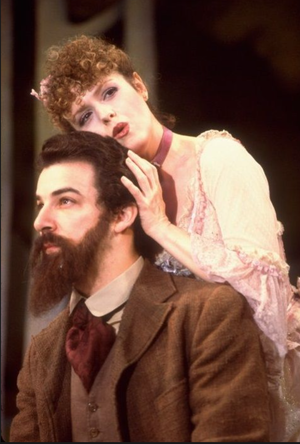
Mandy and Bernadette knew it in Sunday in the Park with George: you’ve got to Move On.
(In this case, move on means submit to the next person on your list, and don’t expect ever to hear back from the original publishing house. You don’t need to officially withdraw the manuscript. If by some miracle the first editor later says he or she is interested in your book, and you haven’t yet sold it, then great. But meanwhile you’ve taken your career into your own hands.)<img Mandy and Bernadette knew it in Sunday in the Park with George: you’ve got to Move On.”
Mandy and Bernadette knew it in Sunday in the Park with George: you’ve got to Move On.
#2. Regrettably, in this era, silence is the new no. Many literary agents have realized they don’t have the time to reply to every query they receive, so they’ve enacted a policy of “if you don’t hear from us in ___ weeks, assume we’ve passed.”
Here’s what to do when you’ve queried and agent and the allotted time to hear back has passed: MOVE ON.
Waiting for just the right literary agent or editor to say yes to you is like being in 7th grade and waiting for just the right boy, the one you know is perfect and you will spend the rest of your life with, to ask you out. You are much, much better off moving on to the guy standing right next to him in the lunch line.
This is also a good rule for a publishing house accepting unsolicited manuscripts, and for editors or publishers who are accepting submissions for a certain period after a conference. If you don’t hear back from them after 12-16 weeks, assume it’s a no and move on.
#3. You have signed with a literary agent, but they aren’t getting back to you. Maybe they don’t return your calls, maybe they don’t answer your emails. Everyone slips up now and again, of course, and that’s not what I’m talking about. Have you left a few messages in a row for your agent, either by email or phone, and not gotten a reply? Has that happened several times? End the relationship. The LAST thing you want is an agent who doesn’t return your calls or emails. The publishing process is frustratingly slow and thorny and fraught with all sorts of issues. Your agent is your champion; he or she goes into battle for you. You do not want to be in that battle not knowing when your weaponry is going to show up. Send an email and say you’re terminating the relationship. Do it now.
(And don’t be scared. Most agents are excellent. But I get asked about this every few months, so I’m including it.)
#4. An editor tells you he is taking your manuscript to an acquisitions meeting, then you don’t hear anything further. Follow up, by phone or email, remembering the rule, “always be polite and to the point.” Say “You said you were bringing my book to the committee, has there been a response?” I know, I know, who wants to send that email and hasten the chance of hearing “I’m afraid the committee passed?” But it’s better to hear “no” and move on. It’s also possible your editor needs to be prodded to get that book onto the meeting agenda. You just don’t know. You need to follow up.
Nota bene: ALWAYS be nice. Never lose your cool and yell at an editor, even by email, even when he deserves it. First, you never know the full story—I got screamed at, really screamed at, once when it was my boss causing the delay, but what could I do but take the heat? And second, venting is what you have friends for. The editor is disorganized, doesn’t value your time, has kept you hanging, repeatedly breaks her word about when she’s going to reply… all true. Still, be professional, courteous, and polite. For one thing, when a writer is nice and understanding, we, the editors, only feel more guilty and determined to treat you well and to finally get you an answer. Secondly, one day you may need that person you just reamed out. He may be sitting in the audience at sales conference, and be able to tell a rep “Oh, I know that author, so talented.” Or you may end up sitting next to that editor on a panel at a conference, who knows? Don’t burn bridges. Act professionally and then go out for drinks with your BFF and get it all off your chest.
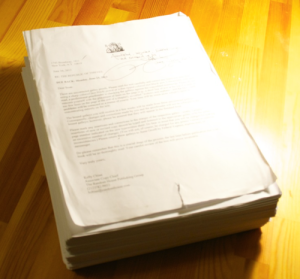 #5:
#5: Perhaps your book is under contract,
but your editor isn’t getting back to you with editorial notes, or with anything else. You want to revise, you have another book you need to work on, and you need to know what’s going on. But although you’ve emailed the editor three times to ask about the book’s schedule, you hear nothing. If you have an agent, easy, just tell the agent and he or she will deal with it. (Unless the agent doesn’t return your calls, in which case, see #2). But if you don’t have an agent, and you aren’t hearing back from your editor? Email their boss. Yup. Email the publisher, remembering to be professional and concise, saying “
I haven’t had an answer to my questions about the book’s schedule and I’m getting worried that my revision might conflict with another project; of course I understand how busy my editor is, but I wonder if you have information for me?” The publisher then forwards it to the editor who deals with it immediately.
Filed under:
Advice,
article,
Editors,
need to know,
reference,
submissions,
Tips Tagged:
5 Ways to Follow Up With An Editor or Agent,
Elizabeth Law 


By: Kathy Temean,
on 9/29/2014
Blog:
Writing and Illustrating
(
Login to Add to MyJacketFlap)
JacketFlap tags:
Sarah LaPolla,
Literary Fiction definition,
Bradford Literary,
Commercial Fiction definition,
Agent,
Advice,
article,
need to know,
demystify,
reference,
Add a tag
Don’t be afraid of the difference between literary and commercial fiction like these Scaredy Scouts illustrated by B.L. Bachmann below. B.L. is a writer and illustrator living in Los Angeles. Her mission is to make people smile, and even giggle :) See more at http://www.blbachmann.com
 I spent last week running two writer’s retreats in Avalon, NJ. The agents at the first retreat were Sarah LaPolla from Bradford Literary and Carly Watters from P.S. Literary. The agents at the second retreat were Ammi-Joan Paguette from Erin Murphy Agency and Heather Alexander from Pippin Properties.
I spent last week running two writer’s retreats in Avalon, NJ. The agents at the first retreat were Sarah LaPolla from Bradford Literary and Carly Watters from P.S. Literary. The agents at the second retreat were Ammi-Joan Paguette from Erin Murphy Agency and Heather Alexander from Pippin Properties.
It was a gorgeous week. Everyone received a full manuscript critique with an agent and a full manuscript critique from everyone in their group. I have to say, I think both of the sessions were the best retreats I have put together. The agents were top notched and each writer in each group took extreme care with their critiques, so we walked away with lots of ideas for revisions and with many doors open with the agents. On top of that, everyone meshed well and we had a tons of fun. Can’t think of anything that was missing.
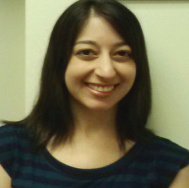 During the week the question came up about the difference between Literary Fiction and Commercial Fiction. Lucky for us, Sarah LaPolla had written an explanation on her blog and gave me permission to post it on Writing and Illustrating.
During the week the question came up about the difference between Literary Fiction and Commercial Fiction. Lucky for us, Sarah LaPolla had written an explanation on her blog and gave me permission to post it on Writing and Illustrating.
Here is Sarah:
I don’t think writers should get too hung up on labels, but it’s important to know what genre you’re writing. You’re expected to give an agent an immediate sense of where they can sell your book, but even more than that you should be able to know who you’ll be next to on a bookshelf so that you can read your comparison titles accordingly.
Figuring out thriller vs. mystery vs. suspense or paranormal romance vs. urban fantasy vs. supernatural horror can be difficult, I know. In these cases, it’s best to just choose the closest and let a professional decide the best way they can sell it. But the line between literary and commercial isn’t as vague. You shouldn’t claim your book is literary fiction if it isn’t. For one, it’s rare you’ll find an agent who looks for literary fiction and genre fiction with the same fervor, if they take on both at all. You don’t want to get a rejection based on a mislabel. Secondly, literary fiction is quite different than genre fiction, and not learning the difference can reflect a lack of research on your part.
The common argument, however, is that all books are technically literary. Right? Well, yes and no. Saying all books are literary is like saying all Young Adult novels are about characters under 25. The genre labels can be misleading, which is why it’s important to know what they mean.
If you’re unsure about which you’ve written, here’s a quick definition of each:
Literary fiction: The focus is on character arc, themes (often existential), and the use of language. I like to compare literary fiction authors to runway designers. The general public isn’t mean to wear the clothes models display on the runway. They exist to impress the other designers and show the fashion industry what they can do. Literary writing is a lot like that, but on a more accessible level. Many dismiss literary fiction as “too artsy” and “books without a plot,” but this isn’t true. At least not most of the time. The plot is there; it’s just incidental. Literary fiction is meant to make the reader reflect, and the author will almost always prefer a clever turn of phrase over plot development.
Commercial fiction: For the purposes of this blog post, I’ve been using this interchangeably with genre fiction. Basically, all genre fiction is commercial, but not all commercial fiction is genre. There is also “upmarket” commercial fiction, which I’ll get to later. Unlike literary fiction, genre fiction is written with a wide audience in mind (aka “commercial”) and always focuses on plot. There is still character development in genre fiction, but it is not as necessary. Characters get idiosyncratic quirks, clever dialogue, and often learn something new about life or themselves by the end. The difference is that their traits are only skin deep. The reader stays with them in the present. Rarely do we see a character’s past unless there is something pertinent to the plot back there. Genre fiction has a Point A and a Point B, and very little stands in the way of telling that story.
Keep in mind that an agent or editor will rarely prefer you to play with these formats, especially if you’re a debut author trying to find (and build) your audience. If you’re writing a plot-driven genre novel that adheres to a sci-fi, romance, or thriller structure, don’t try to load it with literary devices and huge character back-stories that aren’t relevant to the plot. It won’t impress an agent if you have a super literary genre novel. It will more likely confuse us and make your book harder to sell.
“Upmarket” fiction is where things get tricky. Books like The Help, Water for Elephants, Eat, Pray, Love, and authors like Nick Hornby, Ann Patchet, and Tom Perrotta are considered “upmarket.” Their concept and use of language appeal to a wider audience, but they have a slightly more sophisticated style than genre fiction and touch on themes and emotions that go deeper than the plot.
With debut authors, I think the main source of uncertainty tends to come from what they set out to write vs. what they actually write. Genre fiction is written with a clear purpose. The author has an idea and writes a story to accomplish their goal. Literary fiction can be more accidental. A writer may start with an idea, and then discover along the way that they don’t want to write about that anymore. They’ve fallen for their character’s personal tale or the images they want to evoke within the reader. If the writing ends up falling somewhere in the middle, then it might be considered “upmarket.” Or, it could mean it needs more focus one way or the other.
What’s important to remember is that none of these types of fiction is better than the other. It’s all about personal preference, based on what you like to read and how you write. If an agent doesn’t represent a certain genre, it doesn’t mean he or she think it’s bad. It just means you’re better off with someone else. Be aware that a genre label can influence an agent, but be honest about what your genre is. It wastes everyone’s time – most importantly, yours – if you try to guess what you think agents want. We want books we can fall in love with that fall under in genres and styles we represent, whether they’re young adult, adult genre fiction, or literary to a Proustian degree. That’s all.
You should drop by and take a look at Sarah’s blog: http://glasscasesblog.blogspot.com/ Sarah has agreed to be a Guest Blogger in the near future on a different subject, but another enjoyable post that will broaden your knowledge.
Thanks Sarah for sharing.
Talk tomorrow,
Kathy
Filed under:
Advice,
Agent,
article,
demystify,
need to know,
reference Tagged:
Bradford Literary,
Commercial Fiction definition,
Literary Fiction definition,
Sarah LaPolla 


By: Kathy Temean,
on 9/27/2014
Blog:
Writing and Illustrating
(
Login to Add to MyJacketFlap)
JacketFlap tags:
reference,
publishers,
ebooks,
Publishing Industry,
opportunity,
Book Contracts,
Places to sumit,
Digital New Adult Deals,
e-publishers to check out,
New Adult Publishers,
Add a tag
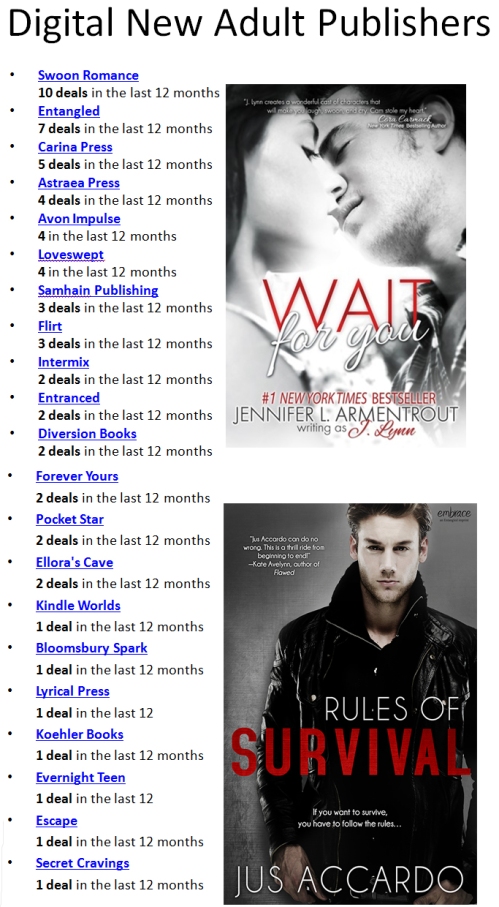
PLEASE NOTE: The deals listed are only the deals reported to Publishers Marketplace between June 2013 and June 2014. Not all deals are reported.
Talk tomorrow,
Kathy
Filed under:
Book Contracts,
opportunity,
Places to sumit,
publishers,
Publishing Industry,
reference Tagged:
Digital New Adult Deals,
e-publishers to check out,
ebooks,
New Adult Publishers 


By: Kathy Temean,
on 9/21/2014
Blog:
Writing and Illustrating
(
Login to Add to MyJacketFlap)
JacketFlap tags:
need to know,
Dow Phumiruk,
90 Things to answer about your characters before writing,
Character Checklist,
Character Questions,
Writing Tips,
reference,
Process,
revisions,
Add a tag
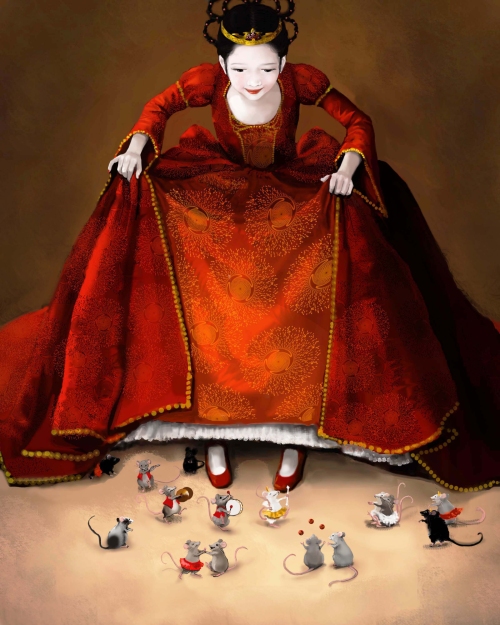
Here is a character illustrated by Dow Phumiruk. Just from the picture we can see she likes to dress nice, is probably a princess, most likely loves the color red, and likes to dance with mice. This is just the tip of the iceberg for this beautiful girl. Every agent and editor will tell you that it is a writers characters that make or break their story, so I made up a list of questions you can answer to help you get to know your character before you start writing. It can even help you with your next revision.
CHARCACTER CHECKLIST:
- How old is your character?
- What does your character look like?
- Are they tall, short, fat, shinny, big nose, big ears, long eyelashes, acne, etc.
- Is your character happy with the way they look?
- What kind of clothes do they like to wear?
- Does your character dream? What are they about?
- What are your character’s favorite food? Favorite junk food, Favorite ice cream flavor?
- What is their favorite color? Favorite flower? Favorite movie? Favorite game?
- Do the kids in school like him or her?
- Has that changed? Did the kids like them in a lower grade or vice versa?
- Are they interested in sports?
- Are they a natural athlete or someone who has to try hard to play a sport?
- What was their role in their family growing up?
- Do they love their parents, siblings, etc?
- Do they have a computer? What do they do on the computer? Are there any restrictions?
- Are they getting addicted to any technology?
- Do they have a cell phone? Any problems with how they use it?
- Do they talk on their cell phone when they should be sleeping? Do they text too much?
- Do they like to read?
- What type of books, magazines, etc. do they read?
- Do they play a musical instrument?
- What were they most proud of as a kid?
- What did they find terribly embarrassing as a kid?
- What still embarrasses them?
- Who is their best friend?
- Does your character have a best friend?
- Has that changed?
- What is their first best friend like?
- What do they like about their friend?
- Do they like to talk? Do they talk too much? Are they shy or a loner?
- Does your character cry alot? Gets mad easily? Laughs easily? Make jokes?
- What ‘group’ are they in during school?
- What do they want to be when they grew up–and how is that going?
- Have they ever been sick or in an accident?
- What music do they like? Do they hate the music that other people in their family like?
- What are their hobbies?
- Does your character collect anything?
- Do they play video games?
- Does your main character like getting dirty?
- Do they have good hygiene?
- Would you say your character is selfish?
- What annoys them?
- Are they a bully?
- What makes them laugh?
- Are they a dog, a cat, or an animal person?
- Does your character have a pet? Want a pet?
- What season do they enjoy most?
- Do they have a favorite holiday?
- Is your character religious? Does that play a role in their life?
- Is their family rich or poor?
- What type of house do they live in?
- Where do they live? City? Suburbs? Countryside?
- Has your character seen the ocean?
- Has your character traveled anywhere other than where they live? Would they like to travel?
- Does your character have money to spend?
- Do they care about money?
- Do they drink alcohol?
- Has anyone tried to get them to take drugs? Would they take drugs? Smoke?
- What is the worst thing your character has done?
- What do they feel most passionately about?
- What trait do they find most admirable in others?
- Do they want a job that helps people or a job that makes money?
- Are they a leader or a follower?
- What scares them?
- What are their long term goals?
- What are their short term goals?
- What are their bad habits?
- If they could have lived in another decade which would it have been?
- What do they do when they’re bored?
- What do they think happens after we die?
- If they were to come into money what would they do with it?
- Have they ever been in love?
- What happened to that person?
- Are they still interested in that person?
- Does the person know about that?
- What did the family think about this person?
- Who was or is the love of their life?
- Is your character afraid of anyone? Or anything?
- What is their biggest fear?
- Do they feel safe? Of not, who or what is causing that anxiety?
- Are they in a sexual relationship? Would they like to be?
- Do they look forward to growing up?
- What do they want the most?
- How close are they to getting what they want?
- What will happen if they don’t get what they want?
- Any negative forces around your character?
- Does your character have anyone to confide in?
- What is the best thing you character has ever done?
- Does your character get depressed? What depresses them?
- Does your character look at the world as being half full or half empty?
Thank you Dow for sending in the above illustration. Dow is an aspiring children’s book illustrator. She won the 2013 SCBWI On-the-Verge Emerging Voices Award that promotes diversity in children’s books. Please visit her newly organized portfolio site at http://www.artbydow.blogspot.com. She was also feature on Illustrator Saturday: https://kathytemean.wordpress.com/2013/01/19/illustrator-saturday-dow-phumiruk-md/
Talk tomorrow,
Kathy
Filed under:
need to know,
Process,
reference,
revisions,
Writing Tips Tagged:
90 Things to answer about your characters before writing,
Character Checklist,
Character Questions,
Dow Phumiruk 


By: Kathy Temean,
on 9/17/2014
Blog:
Writing and Illustrating
(
Login to Add to MyJacketFlap)
JacketFlap tags:
Tips,
list,
reference,
picture books,
Advice,
authors and illustrators,
Dilys Evans,
How to,
Guide to Evaluate a Picture Book,
How to Spot a Great Picture Book,
Add a tag
 Dilys Evans has been providing advice to young artists since 1978, when she founded Dilys Evans Fine Illustration.
Dilys Evans has been providing advice to young artists since 1978, when she founded Dilys Evans Fine Illustration.
Below is a summary of that advice—10 characteristics that she believes all outstanding picture books have in common.
Use it as a guide as you evaluate the picture books in your collection.
1. In the Beginning Was the Word
The pictures must be truly inspired by the story.
2. Preparation Is Paramount
The artist knows his or her characters, subject, and the setting inside and out.
3. A Great Cover Is a Great Start
If the cover art is compelling, it will make the viewer pick up the book and turn the pages.
4. The Artist Sets the Scene before the Story Begins
The inside flap offers a great opportunity to set the stage for the story or introduce a character.
5. The Endpapers Involve the Reader
Endpapers are another opportunity to add to the story or overall design of the book.
6. The Medium Is the Message
The perfect choice of medium to illustrate the text should convey every mood and nuance.
7. Every Picture Tells the Story
Every image is central to the story and moves it forward to the next page.
8. The Book Is a Form of Dramatic Art
Every scene must be carefully chosen to dully illustrate the drama and excitement of the story as it unfolds.
9. Art and Type Should Be a Perfect Marriage
The typeface should seem to be almost an extension of the art itself.
10. White Space Rules!
White space is a compositional element and not just a background to present the art.
Printed by the School Library Journal, September 2005
Talk tomorrow,
Kathy
Filed under:
Advice,
authors and illustrators,
How to,
list,
picture books,
reference,
Tips Tagged:
Dilys Evans,
Guide to Evaluate a Picture Book,
How to Spot a Great Picture Book 


By: Kathy Temean,
on 9/9/2014
Blog:
Writing and Illustrating
(
Login to Add to MyJacketFlap)
JacketFlap tags:
Author,
reference,
inspiration,
Advice,
Process,
article,
Guest Blogger,
children writing,
Erika Wassall,
Jersey Farm Scribe,
Researching Fiction,
Add a tag
 Jersey Farm Scribe here on…
Jersey Farm Scribe here on…
Researching Fiction
Umm, excuse me. You know what FICTION means, don’t you? It means it’s not a true story. I can’t research something that isn’t true. So fiction books can’t require any research.
That was how I felt at my very first writer’s group, before I was even involved in SCBWI. I was discussing how excited I was to be really getting into my first children’s book process. And someone asked me “So, how’d you do your research?”
I blinked a few times… and tried to pretend I understood the question. It’s not historical fiction, I thought to myself. So I squirmed around in my seat a bit and mumbled something like, “Well, it didn’t take much,” hoping that would change the topic.
But it led into a very valuable conversation that I will never forget.
ALL books involve research. (with the exception of some picture books)
If your book has more than 1000 words (and even many that don’t), some level of research is almost always necessary in order to develop the tangible reality of the characters. Does your character live in San Francisco? You need real street names, and even just some quick research of the city will show you that references to the hilly roads would add relatable layers to your story.
Is your character’s mother a nurse? Look into nursing schedules and rotating shifts, or some terminology that they may use.
Is someone preparing for college? What universities might they visit? What dorm names will they tour?
In order for your characters to be as alive to your readers as they are to you, there needs to be facts about them interwoven in the story that are laced in reality.
Obviously there are exceptions. Science fiction books or fantasy books create their own reality, and are more focused on sticking to the rules in the reality they have constructed.
But no matter the story, as writers, we are really jacks-of-all-trades.
Does our character fall in love with a gear-head? We have to become the mechanic. We have to know what that rough-edged muscle car lover knows. What he’d talk about, even if it’s while she’s rolling her eyes.
Does someone in the story ride horses? We have to fall in love with horses as well. We have to know if she rides Western or English, what class her horse competes in, and how many hands high the withers are.
And it’s not just facts. Human behavior is often the most important part of any story and we have to be in touch with the many facets of psychology. How actions and experiences shape personalities from all different perspectives.
We may have to understand the psychology of a child whose mother is in jail, or perhaps divorced parents that use them as a pawn. We may have to understand the subtle symptoms of how an overactive child might act, the struggles the parents might go through, and how it can affect the siblings as well.
The first time I thought about this, my initial reaction was… but I just want to write!
It seemed like a hindrance, another consumer of my precious time.
But as I’ve developed in my writing, I have come to really appreciate and enjoy the research side of any story. It brings the story off the paper, and links the creation into the tangible world.
In fact, I find myself constantly looking for ways to do MORE research. Maybe my character’s sister is off at college. Sure, I could make up a fake college name. But why? Why not use a real college, real dorm names and streets in the area?
Not only does this add a layer of reality, but it can add interest for marketing as well! People like to see their town name in print. Got a character who loves sports? Use real teams. Other fans will cheer right along with them.
The characters we paint have more than just the story we put on paper. They have a past, and a future. Part of our job is to do the research, to delve into everything in their lives and in the lives of those around them. This is just one of the many ways we add tangible, relatable layers to our story.
Because simply put, our manuscripts are worth it!
Erika
Erika Wassall is a writer, a farmer and a liver of life. She is a member of SCBWI and a proud Mad Scientist, bringing science experiments right into children’s classrooms, and hearts. She has a small farm in New Jersey with sheep, chickens, pigs and vegetables. Check out her new website at www.TheJerseyFarmScribe.com where as a first generation farmer, she often takes the long way, learning the tricks of the trade on The Farm. On her website is also The Shop page with tips and a free Q/A from her husband’s mechanic shop, and The Writer page where she shares stories, experiences and characters from the heart. Follow her on Twitter at @NJFarmScribe. She’d love to hear from you!
Thanks Erika for another valuable, well written post.
Talk tomorrow,
Kathy
Filed under:
Advice,
article,
Author,
children writing,
inspiration,
Process,
reference Tagged:
Erika Wassall,
Guest Blogger,
Jersey Farm Scribe,
Researching Fiction 


By: Kathy Temean,
on 9/2/2014
Blog:
Writing and Illustrating
(
Login to Add to MyJacketFlap)
JacketFlap tags:
Writing Tips,
reference,
inspiration,
Character,
article,
Body Language,
Changing Minds,
Communicating through Body Language,
Romantic Body Language,
Add a tag
 Most writers add a little romance to the mix while telling their story. I found this over at http://www.Changingminds.org. It really isn’t a site for writers. It is a site to help us learn the signals people send through body language in order to communicate better, since 50% or more of what we communicate is done with body language. It is a very comprehensive site that covers everything.
Most writers add a little romance to the mix while telling their story. I found this over at http://www.Changingminds.org. It really isn’t a site for writers. It is a site to help us learn the signals people send through body language in order to communicate better, since 50% or more of what we communicate is done with body language. It is a very comprehensive site that covers everything.
I figured we could use some of the information to enrich our characters by adding a little BL. It would be a great tool when you want a character to say one thing, while signaling something completely different with their body language.
Below are some body movements that signal to a person of the opposite sex that you are interested in romance.
From afar
From afar, the first task of body language is to signal interest (and then to watch for reciprocal body language).
Eyes
The eyes do much signaling. Initially and from a distance, a person may look at you for slightly longer than normal, then look away, then look back up at you, again for a longer period.
Preening
There are many preening gestures. What you are basically saying with this is ‘I am making myself look good for you’. This includes tossing of the head, brushing hair with hand, polishing spectacles and brushing clothes.
Enacting
Remote romantic language may also include enactment of sexually stimulating activities, for example caressing oneself, for example stroking arms, leg or face. This may either say ‘I would like to stroke you like this’ or ‘I would like you to stroke me like this’.
Similarly, the person (women in particular) may lick and purse their lips into a kiss shape and leave their mouth slightly open in imitation of sexual readiness.
Objects held may be also used in enactment displays, including cigarettes and wine glasses, for example rolling and stroking them.
Displaying
Attractive parts of the body may be exposed, thrust forward, wiggled or otherwise highlighted. For women this includes breasts, neck, bottom and legs. For men it includes a muscular torso, arms or legs, and particularly the crotch (note that women seldom do this).
Faking often happens. Pressing together muscles gives the impression of higher muscle tone. Pressing together and lifting breasts (sometimes helped with an appropriate brassiere) makes them look firmer and larger. Holding out shoulders and arms makes the body look bigger. Holding in the abdomen gives the impression of a firm tummy.
This is often playing to primitive needs. Women show that they are healthy and that they are able to bear and feed the man’s child. The man shows he is virile, strong and able to protect the woman and her child.
Leaning
Leaning your body towards another person says ‘I would like to be closer to you’. It also tests to see whether they lean towards you or away from you. It can start with the head with a simple tilt or may use the entire torso. This may be coupled with listening intently to what they say, again showing particular interest in them.
Pointing
A person who is interested in you may subtly point at you with a foot, knee, arm or head. It is effectively a signal that says ‘I would like to go in this direction’.
Other displays
Other forms of more distant display that are intended to attract include:
- Sensual or dramatic dancing (too dramatic, and it can have the opposite effect).
- Crotch display, where (particularly male) legs are held apart to show off genitalia.
- Faked interest in others, to invoke envy or hurry a closer engagement.
- Nodding gently, as if to say ‘Yes, I do like you.’
THE CLASSIC ROMANTIC PURSUIT:
- Girl fancies boy and makes eye contact.
- Boy is attracted and continues eye contact (pursuit).
- Girl looks away (rejection)
- Boy looks away (retreat)
- Girl looks at boy and holds eye contact for longer (pursuit)
- Girl looks away again (rejection)
- Boy goes over to girl to say hello (pursuit)
- Girl plays hard-to-get (rejection)
- …etc.
Rejection works because of the Scarcity principle, where we desire what we cannot have.
Up close
When you are close to the other person, the body language progressively gets more intimate until one person signals ‘enough’.
Close in and personal
In moving closer to the other person, you move from social space into their personal body space, showing how you would like to get even closer to them, perhaps holding them and more…
Standing square-on to them also blocks anyone else from joining the conversation and signals to others to stay away.
Copying
Imitating the person in some way shows ‘I am like you’. This can range from a similar body position to using the same gestures and language.
Lovers’ gaze
When you are standing close to them, you will holding each other’s gaze for longer and longer periods before looking away. You many also use what are called ‘doe eyes’ or ‘bedroom eyes’, which are often slightly moist and with the head inclined slightly down.
Where the eyes go is important. Looking at lips means ‘I want to kiss’. Looking at other parts of the body may mean ‘I want to touch’.
A very subtle signal that few realize is that the eyes will dilate such that the dark pupils get much bigger. This is one reason why dark-eyed people can seem attractive. Light-eyed people (typically blue) make the pupil easier to distinguish, so when their pupils do get bigger the signal they send is easier to read.
Touching
Touching signals even closer intimacy. It may start with ‘accidental’ brushing, followed by touching of ‘safe’ parts of the body such as arms or back.
Caressing is gentle stroking that may start in the safer regions and then stray (especially when alone) to sexual regions.
Talk tomorrow,
Kathy
Filed under:
article,
Character,
inspiration,
reference,
Writing Tips Tagged:
Body Language,
Changing Minds,
Communicating through Body Language,
Romantic Body Language 

We "see" when we read, and we "see" when we listen. There are many ways in which music can create the cross-sensory experience of this seeing... through sonic imitation, through poetic evocation, through dynamic mapping, through programmatic association, through the literal use of physical materials... 1. "La Mer" by Claude Debussy The big kahuna of [...]

By: Kathy Temean,
on 8/6/2014
Blog:
Writing and Illustrating
(
Login to Add to MyJacketFlap)
JacketFlap tags:
Tips,
reference,
Advice,
Amazon Reviews,
How to,
need to know,
Marketing a book,
Advanced Reader Copy,
Amazon Ebook Price Reduction,
Add a tag

- Give out a ARC to people who have a large following on their blogs, but ask them to commit to reading your book and doing a review. Need to work on this months before your book is released. Remember the more reviews you get the better your book will do, but they need to be good reviews.
- For the people who you gave an ARC to, ask them to pass on the book to another person to read to expand your audience.
- Ask everyone who does a review on Amazon to also put it up on Goodreads, too.
- If you have an ebook, consider having Amazon offer it on their Deal of the Day. Reducing the price for a few days or a week, will boost your sales and start word of mouth.
- Have family/friends/colleagues/fans buy your book during a ‘soft’ launch (pre-advertising, or promoting your book on social media).
- Price your book at 99 cents (the lowest allowed by Amazon) and drive as much traffic as you can during your ‘soft’ launch window. Once you have the bar filled you can re-price your book.
Talk tomorrow,
Kathy
Filed under:
Advice,
How to,
Marketing a book,
need to know,
reference,
Tips Tagged:
Advanced Reader Copy,
Amazon Ebook Price Reduction,
Amazon Reviews 

View Next 25 Posts












 Rachel Marks, Agent
Rachel Marks, Agent Yvonne Ventresca (Pandemic author) sent me a note pointing out all the wonderful writing worksheets on Jami Gold’s Blog. I wanted to make sure I pointed out all the helpful information you can find, download, and use on her site.
Yvonne Ventresca (Pandemic author) sent me a note pointing out all the wonderful writing worksheets on Jami Gold’s Blog. I wanted to make sure I pointed out all the helpful information you can find, download, and use on her site.
 I am a big believer in creating an outline of your story and keep telling other writers how much it will help them with writing their novel. They nod their head, when they really want to pat me on the head and say, “Thanks, but no thanks.” So tonight read the beginning of K.M. Weiland’s “how to write book” titled,
I am a big believer in creating an outline of your story and keep telling other writers how much it will help them with writing their novel. They nod their head, when they really want to pat me on the head and say, “Thanks, but no thanks.” So tonight read the beginning of K.M. Weiland’s “how to write book” titled, 
 The Amazing Wolf Boy is a humorous paranormal romance for young adults about a sixteen-year-old nerd who turns into a werewolf during Christmas Eve dinner. His parents banish him to Florida (That’s where I live. What a coincidence.) where he fails to fit in with the other kids.
The Amazing Wolf Boy is a humorous paranormal romance for young adults about a sixteen-year-old nerd who turns into a werewolf during Christmas Eve dinner. His parents banish him to Florida (That’s where I live. What a coincidence.) where he fails to fit in with the other kids.  I would also advise you to take care with your book formatting. Readers don’t have the patience to read text with large gaps or ragged indents. On that note, I have written a tutorial.
I would also advise you to take care with your book formatting. Readers don’t have the patience to read text with large gaps or ragged indents. On that note, I have written a tutorial.
 For readers to become invested in a story, they need to “see” characters’ movement and action within a setting. Writers often hear, “Show don’t tell,” and sometimes we think, “But I did show – didn’t I? How do I fix this?”
For readers to become invested in a story, they need to “see” characters’ movement and action within a setting. Writers often hear, “Show don’t tell,” and sometimes we think, “But I did show – didn’t I? How do I fix this?”  I added Jill Elizabeth Nelson,
I added Jill Elizabeth Nelson,  I met Julie Phend at the recent Avalon Writer’s Retreat. She was in my group and I was so impressed because her manuscript was the most polished piece of writing I had ever seen. I found out that Julie is a English teacher and begged her to be a guest blogger and share some common errors that people could easily fix in their own manuscripts.
I met Julie Phend at the recent Avalon Writer’s Retreat. She was in my group and I was so impressed because her manuscript was the most polished piece of writing I had ever seen. I found out that Julie is a English teacher and begged her to be a guest blogger and share some common errors that people could easily fix in their own manuscripts. 



 #5: Perhaps your book is under contract, but your editor isn’t getting back to you with editorial notes, or with anything else. You want to revise, you have another book you need to work on, and you need to know what’s going on. But although you’ve emailed the editor three times to ask about the book’s schedule, you hear nothing. If you have an agent, easy, just tell the agent and he or she will deal with it. (Unless the agent doesn’t return your calls, in which case, see #2). But if you don’t have an agent, and you aren’t hearing back from your editor? Email their boss. Yup. Email the publisher, remembering to be professional and concise, saying “I haven’t had an answer to my questions about the book’s schedule and I’m getting worried that my revision might conflict with another project; of course I understand how busy my editor is, but I wonder if you have information for me?” The publisher then forwards it to the editor who deals with it immediately.
#5: Perhaps your book is under contract, but your editor isn’t getting back to you with editorial notes, or with anything else. You want to revise, you have another book you need to work on, and you need to know what’s going on. But although you’ve emailed the editor three times to ask about the book’s schedule, you hear nothing. If you have an agent, easy, just tell the agent and he or she will deal with it. (Unless the agent doesn’t return your calls, in which case, see #2). But if you don’t have an agent, and you aren’t hearing back from your editor? Email their boss. Yup. Email the publisher, remembering to be professional and concise, saying “I haven’t had an answer to my questions about the book’s schedule and I’m getting worried that my revision might conflict with another project; of course I understand how busy my editor is, but I wonder if you have information for me?” The publisher then forwards it to the editor who deals with it immediately. I spent last week running two writer’s retreats in Avalon, NJ. The agents at the first retreat were Sarah LaPolla from Bradford Literary and Carly Watters from P.S. Literary. The agents at the second retreat were Ammi-Joan Paguette from Erin Murphy Agency and Heather Alexander from Pippin Properties.
I spent last week running two writer’s retreats in Avalon, NJ. The agents at the first retreat were Sarah LaPolla from Bradford Literary and Carly Watters from P.S. Literary. The agents at the second retreat were Ammi-Joan Paguette from Erin Murphy Agency and Heather Alexander from Pippin Properties.  During the week the question came up about the difference between Literary Fiction and Commercial Fiction. Lucky for us, Sarah LaPolla had written an explanation on her blog and gave me permission to post it on Writing and Illustrating.
During the week the question came up about the difference between Literary Fiction and Commercial Fiction. Lucky for us, Sarah LaPolla had written an explanation on her blog and gave me permission to post it on Writing and Illustrating.

 Dilys Evans has been providing advice to young artists since 1978, when she founded Dilys Evans Fine Illustration.
Dilys Evans has been providing advice to young artists since 1978, when she founded Dilys Evans Fine Illustration.  Jersey Farm Scribe here on…
Jersey Farm Scribe here on… Most writers add a little romance to the mix while telling their story. I found this over at
Most writers add a little romance to the mix while telling their story. I found this over at 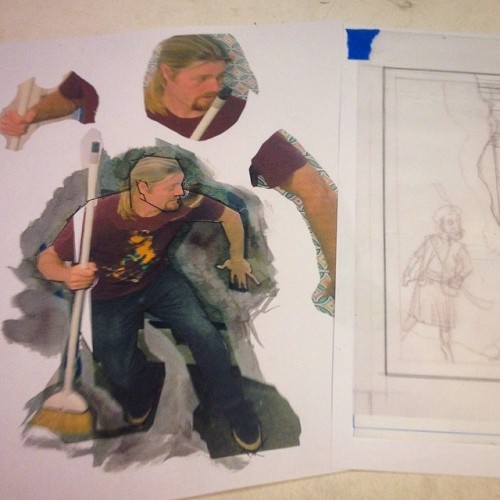

Looks like another year of amazing and useful posts for all us writers. Don’t know how you do it, Kathy, but I’m glad you did! Thanks!
VERY helpful…many thanks Kathy! And a Happy New Year to you too!
Can’t wait to go through all of these. Thanks Kathy!
This will be a handy resource — thank you!